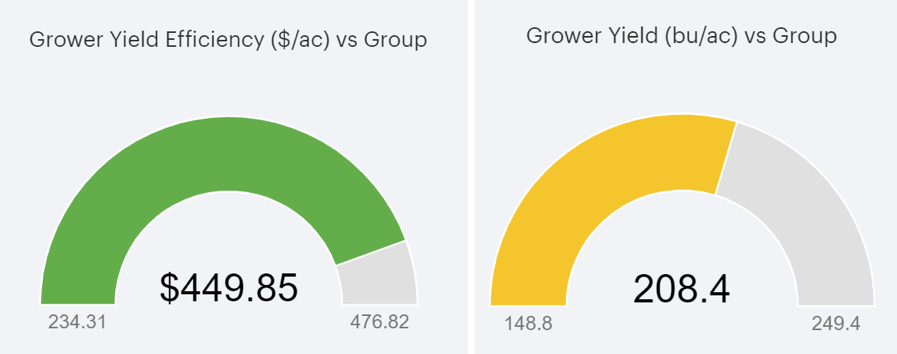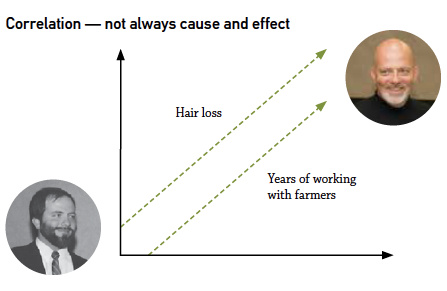Private colleges market their low faculty-student ratios to compete with the draw of big universities and the message is it's a place where we know your name. Insurance companies compete by selling the value of an agent when you have a claim vs. a phone number to call – the message is you are more than a number. These savvy marketers know that "me matters" – at some level most of us value being treated as the individuals we are. Being treated as though we are all the same as our peers – whether by age, gender, race, economic situation or other demographic insults our sense of being unique in the world.
As you are gearing up for harvest, there is a nervous excitement. You are about to get your final grade for 2019. How did you do? Did you make money? Did your decisions for the year pay off? These questions may give you pause, how do you measure such a thing? Is it the check that comes in the mail from the elevator? Is it the number that comes across the combine monitor? Is it, if your harvest map is green instead of red?
Topics: Precision ag, data driven decisions, yield efficiency
Hunters and soil scientists may seem like an odd pairing but they have at least one thing in common – they know and appreciate that nature has an aversion to straight lines. Hunters spend a lot of time in and observing the great outdoors and getting an up-close look at the variability Mother Nature molded upon our landscape. Soil scientists not only spend time looking at the curvy contour lines that represent the transition from one soil type to another but their academic training is about the "how's and why's" of soil formation over the centuries.
Topics: data analytics, yield analysis, yield map
When I began my career in crop production, we would routinely pull 20 soil sample cores, mix the cores in a bucket, pour one pound into a sample bag, send it off to the lab, get the results back and then pretend that what was on the sheet of paper accurately represented the nutrient levels for the entire field. While that may have been the best we could do then, we can do much better now – but many are treating entire fields the same. The economics of grid or small-zone sampling fields and variable-rate applying lime, phosphorus and potassium need to be revisited by many growers and their advisers. Nutrient prices have tripled since grid sampling was first introduced, and grain prices have escalated from the $2.50 per bushel days – meaning the reward for managing your nutrient investment intensely has never been higher.
Topics: management zones
We are excited to announce the launch of our new Data Visualization platform, part of our three-tier technology strategy. This new platform allows growers to gain key insights that give them the ability to make informed decisions based off economics, seed, crop protection, fertility, operations and management.
Topics: data analytics, benchmarking, data driven decisions, economics, data visualization
Throughout Premier Crop's nearly 20 year history, we've perhaps been the most diligent at communicating that what we do – big data analysis – would be considered "observational data analysis" by those in the scientific community.
Topics: Enhanced learning blocks
Difficult economic times tend to bring out skepticism or at least a review of current practices. Recently I was asked “Do variable rate applications of any crop input really pay?” To some it might be surprising that 20 plus years after variable rate technology was first brought to the market, there are still so many that haven’t “bought in” to the concept.
Topics: learning blocks, variable rate
Yield results are in and every plot or trial has an overall winner! Winning a plot isn't easy. Sometimes, luck is involved. Years ago, one of our customers measured the impact of "shading" in a plot. If your company's hybrid was placed next to taller hybrids, how much did being shaded by a taller hybrid affect yield in the outside rows that were shaded? They found the difference could range from 7.7 to 33 bu/acre penalty from being shaded! In some company's trials protocols, they discard the outside two rows and only count the results from the inside two rows.
Topics: seed selection
Long before GPS was part of our acronym vocabulary, my early agriculture career started in eastern Iowa and northern Illinois. On one of those scorching hot July days, as you were driving through the area, every so often the road would be higher than the fields and you could visually capture a birds-eye view of the fields below. You could see parts of the fields, where the corn was rolled up tight as the plants went in to "protection" mode – while other parts of the field look perfectly normal. Images like that help make me an advocate that managing parts of the fields differently would make agronomic and economic sense.
Topics: Enhanced learning blocks, learning blocks, variable rate












